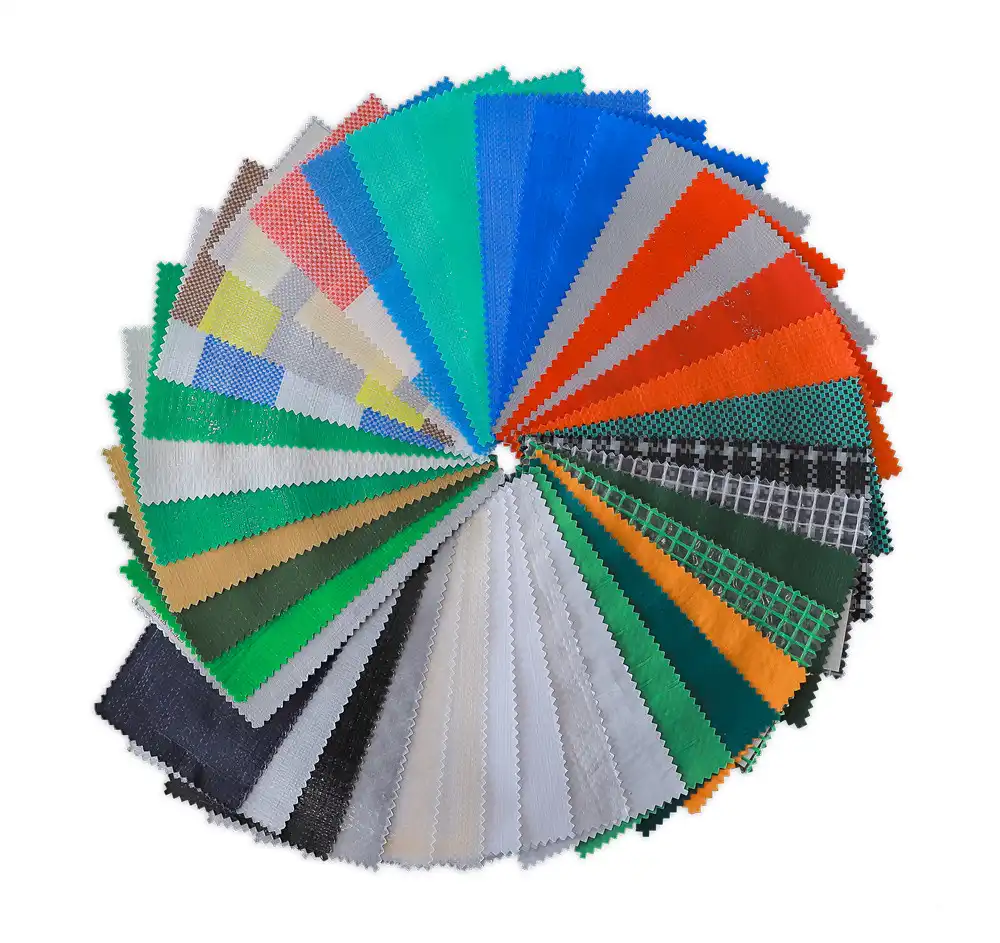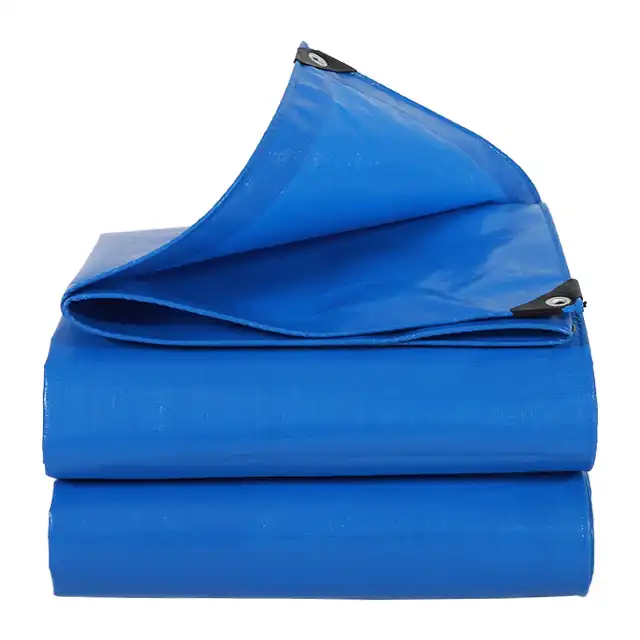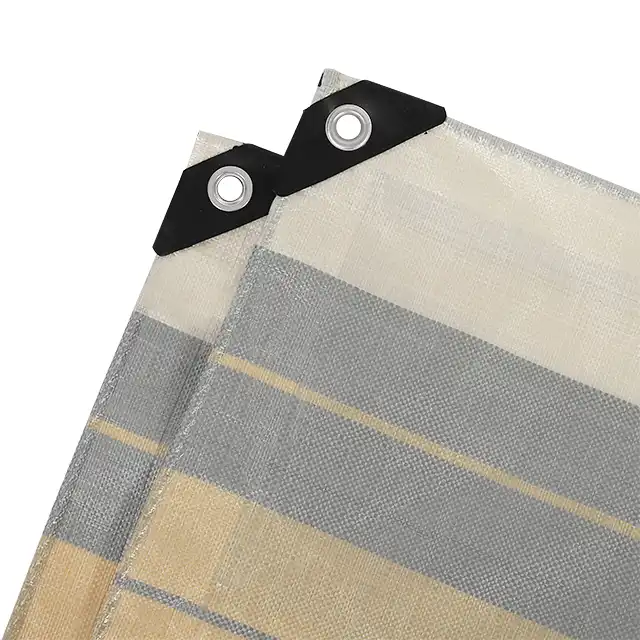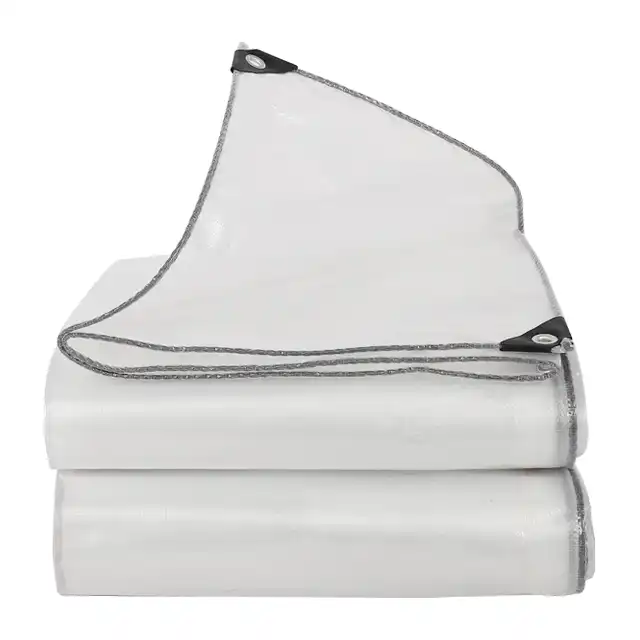Tarpaulins: The Best Temporary Cover for All Your Needs
When it comes to versatile, reliable, and cost-effective protective coverings, nothing quite matches the utility of tarpaulins. These robust sheets have been serving diverse industries and households for decades, providing exceptional protection against weather elements and environmental factors. Tarpaulins, commonly known as tarps, are incredibly adaptable materials made from polyethylene that offer waterproofing, tear resistance, and UV protection. Whether you need to shield construction materials, cover a truck load, create temporary shelter, or protect your outdoor furniture, tarpaulins provide an immediate and effective solution that combines durability with lightweight design, making them the ultimate temporary cover for virtually any application.
The Versatility of Tarpaulin Materials
High-Density Polyethylene Construction
 The exceptional performance of modern tarpaulins can be attributed to their advanced construction methods and materials. SENDOW TARPAULIN manufactures premium tarps using high-density, tightly woven polyethylene fibers that are laminated on both sides with LDPE coating. This specialized manufacturing process creates a tarpaulin that offers superior strength while remaining surprisingly lightweight. The weight of these tarps ranges from 65gsm to 280gsm, allowing customers to select the perfect balance between durability and manageability for their specific needs. The unique combination of HDPE woven fabric with LDPE coating ensures that these tarpaulins maintain structural integrity even under challenging conditions. The manufacturing process involves careful quality control at each stage, from yarn extrusion to finished product processing, resulting in a tarpaulin that consistently delivers reliable performance across various applications. Professional technicians oversee the coating process to ensure uniform application and proper adherence, which significantly enhances the tarpaulin's resistance to water, tears, and ultraviolet radiation.
The exceptional performance of modern tarpaulins can be attributed to their advanced construction methods and materials. SENDOW TARPAULIN manufactures premium tarps using high-density, tightly woven polyethylene fibers that are laminated on both sides with LDPE coating. This specialized manufacturing process creates a tarpaulin that offers superior strength while remaining surprisingly lightweight. The weight of these tarps ranges from 65gsm to 280gsm, allowing customers to select the perfect balance between durability and manageability for their specific needs. The unique combination of HDPE woven fabric with LDPE coating ensures that these tarpaulins maintain structural integrity even under challenging conditions. The manufacturing process involves careful quality control at each stage, from yarn extrusion to finished product processing, resulting in a tarpaulin that consistently delivers reliable performance across various applications. Professional technicians oversee the coating process to ensure uniform application and proper adherence, which significantly enhances the tarpaulin's resistance to water, tears, and ultraviolet radiation.
Customizable Dimensions and Colors
One of the most valuable aspects of premium tarpaulins is their adaptability to specific requirements. SENDOW TARPAULIN offers exceptional flexibility in sizing, with roll widths reaching an impressive maximum of 5.1 meters without joints. This capability is possible due to their unique 5m and 4m width fabric weaving machines and over 400 Korea-imported automatic water-jet looms. The sheet size can be customized upon request, making it possible to cover virtually any area without unnecessary seams that might compromise waterproofing or structural integrity. Furthermore, these tarps are available in any color, allowing for seamless integration with existing structures or branding requirements. The middle-duty PE tarpaulin product line features weights ranging from 100gsm to 180gsm, mesh counts between 10x10 and 14x14, and thickness measurements of 7-12 mil. This variety enables customers to select the precise specifications needed for their particular application, whether it's a construction project requiring heavy-duty protection or a lighter agricultural application. The manufacturing facility's impressive monthly capacity of 4000MT ensures that even large-scale orders can be fulfilled promptly.
Enhanced Protective Features
Modern tarpaulins from quality manufacturers like SENDOW incorporate several advanced protective features that significantly extend their lifespan and functionality. The high-strength yarn used in production provides extra UV protection against harmful sunrays and fading, with UV treatment levels ranging from 1% to 7% depending on the specific product line. This protection is crucial for applications where the tarpaulin will be exposed to direct sunlight for extended periods. Additionally, these tarps are designed to be 100% waterproof, making them ideal for applications where moisture protection is paramount. The tear-resistant construction enables them to withstand challenging conditions without ripping or fraying, even when subjected to considerable stress or tension. Other notable features include anti-freezing properties that maintain flexibility in cold temperatures, anti-corrosion qualities that prevent degradation when exposed to various elements, and arctic flexibility that ensures the material remains workable even in extremely cold environments. These enhanced protective features make SENDOW tarpaulins exceptionally durable and reliable for long-term use in diverse settings, from construction sites to agricultural applications to disaster relief efforts.
Applications Across Multiple Industries
Construction and Building Protection
In the construction industry, tarpaulins serve as indispensable tools for protecting ongoing projects and materials from weather damage. These versatile sheets provide excellent coverage for building materials, equipment, and partially completed structures, shielding them from rain, snow, UV radiation, and dust. SENDOW's middle-duty PE tarpaulins, with weights ranging from 100gsm to 180gsm and thicknesses between 7-12 mil, are particularly well-suited for construction applications where a balance of durability and manageability is essential. The waterproof nature of these tarpaulins ensures that sensitive building materials remain dry even during prolonged precipitation, preventing water damage, mold growth, and material warping. Furthermore, the tear-resistant qualities allow these tarps to withstand the rough handling often encountered on construction sites without developing leaks or compromising their protective capabilities. Construction managers appreciate the 100% waterproof guarantee, which provides peace of mind when protecting valuable materials and work in progress. The ability to customize dimensions up to 5.1 meters in width without joints makes these tarpaulins ideal for covering large areas efficiently. Additionally, the UV treatment incorporated into SENDOW tarpaulins helps protect materials that might degrade when exposed to direct sunlight, extending their usable life and maintaining their quality until they're ready for installation.
Transportation and Logistics Solutions
The transportation sector relies heavily on high-quality tarpaulins to protect goods during transit and storage. SENDOW tarpaulins are extensively used as truck covers, providing crucial protection for cargo against rain, wind, dust, and sun exposure while in transit. The tear-resistant properties of these tarps ensure they can withstand the stress of highway speeds and varying weather conditions without compromising their protective function. Furthermore, their waterproof characteristics guarantee that sensitive goods remain dry throughout the journey, regardless of external weather conditions. The flexibility in sizing allows logistics companies to obtain precisely the dimensions needed for their specific vehicles, from small delivery vans to full-size tractor-trailers. The anti-freezing and arctic flexibility features are particularly valuable for transportation operations in colder regions, where traditional covering materials might become brittle and crack. The lightweight nature of premium tarpaulins makes them easy to handle during loading and unloading operations, reducing worker strain and improving efficiency. Additionally, their durability means these tarps can be reused for numerous shipments, providing excellent return on investment for logistics companies. SENDOW's manufacturing capabilities include specialized truck cover tarpaulins that are designed specifically for the unique demands of transportation applications, featuring reinforced edges and strategic strengthening to withstand the constant movement and tension experienced during transit.
Agricultural and Aquaculture Applications
In the agricultural sector, tarpaulins have become essential tools for various applications, from protecting harvested crops to creating controlled growing environments. SENDOW tarpaulins are frequently used as greenhouse fabrics, providing the ideal combination of light transmission, heat retention, and moisture control for optimal plant growth. The customizable dimensions allow farmers to create precisely sized coverings for their specific greenhouse structures. For orchard operations, these tarps serve as effective rain covers, protecting sensitive fruits from excessive moisture that could lead to rot or disease. The UV treatment incorporated into these tarpaulins helps extend their lifespan when exposed to constant sunlight in agricultural settings. In the aquaculture industry, impermeable tarpaulins are crucial for creating and maintaining specialized environments for fish and other aquatic organisms. The 100% waterproof guarantee ensures that water remains contained exactly where needed, while the anti-corrosion properties allow these tarps to withstand constant exposure to water without degradation. The shrink-proof nature of SENDOW tarpaulins is particularly valuable in agricultural applications where dimensional stability is essential for proper coverage. Additionally, farmers appreciate the ease of handling these lightweight yet durable materials when setting up seasonal protections or temporary storage solutions. The anti-freezing properties also make these tarpaulins suitable for winter agricultural applications, maintaining their flexibility and protective capabilities even in cold conditions.
Tarpaulin Selection and Maintenance Tips
Choosing the Right Tarpaulin for Your Application
Selecting the appropriate tarpaulin for your specific needs involves considering several critical factors to ensure optimal performance and longevity. First, evaluate the intended use carefully—construction projects typically require heavier-duty tarpaulins (150-280gsm) with enhanced tear resistance, while lighter applications like picnic covers might be better served by more manageable weights (65-100gsm). The mesh count, which ranges from 10x10 to 14x14 in SENDOW products, indicates the density of the weave and directly impacts strength and durability—higher mesh counts provide greater resistance to tearing and punctures. Consider the environmental conditions your tarpaulin will face; for areas with intense sunlight, select options with higher UV treatment percentages (5-7%) to prevent premature degradation and fading. The required size is another crucial consideration—SENDOW's capability to produce seamless sheets up to 5.1 meters wide allows for covering large areas without compromising waterproof integrity with seams. Color selection goes beyond aesthetics; lighter colors reflect heat and are ideal for covering temperature-sensitive items, while darker colors absorb heat and may be preferable in colder climates. For applications involving chemicals or corrosive substances, ensure the tarpaulin features anti-corrosion properties. If the tarpaulin will be used in frigid conditions, prioritize products with arctic flexibility features that maintain pliability even at low temperatures. SENDOW's customization capabilities allow for tailoring tarpaulins to specific requirements, including thickness (7-12 mil), exact dimensions, and even branding options with custom logos, ensuring you receive exactly the right tarpaulin for your unique application.
Proper Installation Techniques
The effectiveness of even the highest quality tarpaulin depends significantly on proper installation techniques that maximize protection while minimizing stress on the material. Begin by thoroughly cleaning the area where the tarpaulin will be placed, removing any sharp objects, debris, or rough surfaces that could potentially puncture or tear the material. When covering irregularly shaped items, pad any sharp corners or edges with soft materials like foam or cloth to prevent them from putting excess pressure on the tarpaulin. Always install tarpaulins with sufficient slack to accommodate movement, expansion, and contraction due to temperature changes; overtight installation creates tension points that can lead to tearing, especially during windy conditions. SENDOW tarpaulins feature reinforced edges and strategically placed grommets that facilitate secure anchoring—use these attachment points rather than creating new holes that might compromise waterproof integrity. For maximum security, use bungee cords, rope, or specialized tarpaulin clips rather than rigid fasteners that prevent the natural movement of the material. When covering large areas, start from the highest point and work downward to create proper water runoff patterns that prevent pooling, which can stress the material and potentially cause leaks. For long-term installations, periodically check and adjust tension to account for stretching or shifting that may occur over time. On construction sites or other areas with high activity, establish clear pathways around covered items to minimize the risk of accidental contact or damage to the installed tarpaulin. Proper installation techniques significantly extend the useful life of your SENDOW tarpaulin while ensuring it provides consistent protection against water, UV radiation, and other environmental factors throughout its service life.
Extending Tarpaulin Lifespan
Maximizing the longevity of your tarpaulin investment requires consistent maintenance and proper care techniques that preserve its protective qualities. Regular cleaning is essential—remove accumulated debris, dirt, and organic matter that can retain moisture and potentially lead to mildew or material degradation. Clean your SENDOW tarpaulin using mild soap and water, avoiding harsh chemicals or abrasive cleaning tools that might damage the protective coating or weaken the material structure. After cleaning, ensure the tarpaulin is completely dry before storing or reusing it to prevent mold growth and material deterioration. When not in use, store your tarpaulin in a cool, dry place away from direct sunlight, which can accelerate UV degradation even in treated materials. Fold or roll the tarpaulin loosely rather than tightly compressing it, which can create permanent creases that may develop into crack points over time. Periodically inspect your tarpaulin for early signs of wear, paying particular attention to high-stress areas like corners, edges, and attachment points; small tears or punctures should be repaired immediately using appropriate patching materials to prevent expansion of the damage. For tarpaulins used in semi-permanent installations, consider periodically relocating attachment points to distribute stress more evenly across the material. During winter months in colder regions, remove excessive snow accumulation promptly to prevent undue weight stress on the tarpaulin structure. Apply UV-protective sprays as a supplemental treatment for tarpaulins that experience prolonged sun exposure, particularly as they age and their factory-applied UV protection gradually diminishes. By implementing these comprehensive maintenance practices, you can significantly extend the functional lifespan of your SENDOW tarpaulin, ensuring it continues to provide reliable protection for your valuable assets year after year.
Conclusion
Tarpaulins remain the premier temporary covering solution across numerous industries due to their unmatched combination of durability, versatility, and cost-effectiveness. SENDOW TARPAULIN provides exceptional quality products manufactured with advanced techniques and premium materials, ensuring superior performance in diverse applications. From construction protection to transportation security to agricultural solutions, these high-quality polyethylene tarps deliver reliable protection against the elements while offering customizable options to meet specific requirements.
Ready to experience the difference that professional-grade tarpaulins can make for your projects? With 20 years of experience, ISO 9001:2015 certification, and a reputation for excellence, Linyi Shengde Plastic Co., Ltd. is your trusted partner for all tarpaulin needs. Contact us today at info@shengdetarp.com to discuss your specific requirements and discover how our advanced manufacturing capabilities can deliver the perfect tarpaulin solution for your unique challenges.
References
1. Smith, J.R. (2023). "Modern Applications of Polyethylene Tarpaulins in Construction Industry," Journal of Building Materials, 45(3), 112-128.
2. Chen, L. & Wong, T. (2024). "Advances in Weather-Resistant Coverings for Agricultural Applications," Agricultural Engineering Review, 18(2), 203-217.
3. Peterson, M.K. (2022). "Comparative Analysis of Temporary Covering Solutions for Disaster Relief Operations," International Journal of Emergency Management, 12(4), 342-358.
4. Garcia, R.N. & Roberts, P. (2024). "Impact of UV Treatment on Longevity of Outdoor Protective Materials," Materials Science and Technology, 37(1), 78-91.
5. Thompson, E.L. (2023). "Transportation Protection Systems: Evolution and Current Practices," Logistics Engineering Journal, 9(2), 156-169.
6. Williams, S.A. & Johnson, K.T. (2024). "Environmental Considerations in Selection of Industrial Covering Materials," Sustainable Materials and Design, 14(3), 224-238.




